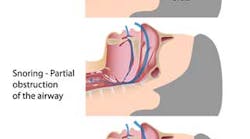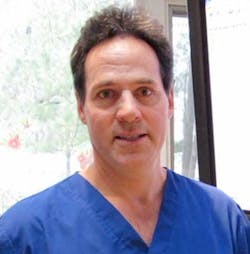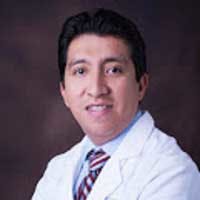Snoring does not indicate sleep apnea all the time
For the proper treatment of snoring problems, it is crucial to be aware of how snoring differs from obstructive sleep apnea (OSA). The fact is, a lot of people snore. Studies show an estimated 30% to 50% of the U.S. population experiences snoring. There are even those who snore significantly. The problem with excessive snoring is that it can trigger various problems including sleep disturbances, marital discord, and waking episodes.
RELATED |Do you ask your dental patients if they snore?
But snoring does not signal the presence of obstructive sleep apnea all the time. There are times when the condition is triggered only by a social inconvenience. To determine whether snoring is tied to OSA, consider whether these sleep apnea symptoms are also present:
- Pauses that take place while snoring
- Choking or gasping that follows the pauses
- Fighting sleepiness at work, when driving, or during the entire day
- Rapidly falling asleep when inactive
- Morning headaches
- Irritability
- Depression
- Personality changes or mood swings
- Sore throat or dry mouth after waking up
- The need to wake up frequently to urinate
- Breathing cessation episodes
- Attention problems
- Difficulty staying asleep
- Decreased libido
Oral and dental devices that help in treating sleep apnea
One way to treat excessive snoring and sleep apnea is to use dental or oral devices. These appliances are useful in correcting mild to moderate cases of obstructive sleep apnea. The good news is that there are numerous options for these dental devices, and an orthodontist or dentist can recommend one that suits the particular needs of the patient and fit it in the safest way.
One device that can be recommended for the sleep apnea sufferer is the mandibular advancement device. This is one of the most widely used dental appliances for the treatment of sleep apnea. It resembles a sports mouth guard in appearance and is useful in forcing the lower jaw down and forward slightly. This offers tremendous help in keeping the airway open, thereby preventing problems in breathing.
A tongue-retraining device can also be recommended to correct sleep apnea. This splint holds the tongue in the right position and works to keep the airway open. Regular dental visits are crucial because the device requires periodic adjustments or replacements.
Benefits of recommending dental devices for the treatment of sleep apnea
There are numerous reasons why dental professionals should consider recommending dental devices and an improvement in oral and dental health to people with sleep apnea. One is that these prove to be truly effective in significantly reducing risks of dealing with mild to moderate cases of apnea. The devices are also particularly useful for those who either sleep on their stomach or back, and are effective in improving the airflow of those who suffer from severe apnea. Other benefits of recommending dental appliances and improving oral and dental health for sleep apnea and snoring sufferers are improved sleep patterns, reduced frequency of snoring, reduced loudness of snoring, and high success rates.
If you are an orthodontist, then discussing orthodontic treatments such as rapid maxillary expansion can also help. This orthodontic treatment involves temporarily applying a screw device into the upper teeth and tightening this on a regular basis. Rapid maxillary expansion can also be recommended for those with narrow upper jaw. This is a nonsurgical orthodontic procedure that is effective in reducing nasal pressure and improving breathing patterns.
As a dental professional or orthodontist, consider discussing other possible sleep apnea solutions to those who decide to visit your dental practice. This will support the accurate correction of the problem while also encouraging improved oral and dental health.
ALSO BY DR. PATRICK CRAWFORD AND DR. MARIO PARY |What does osteoporosis have to do with oral health?









